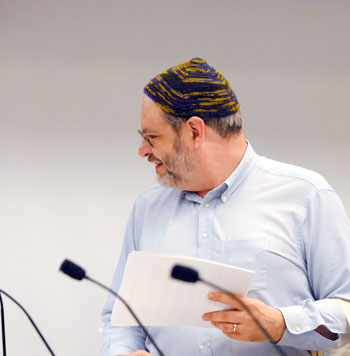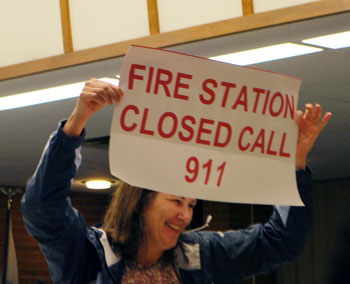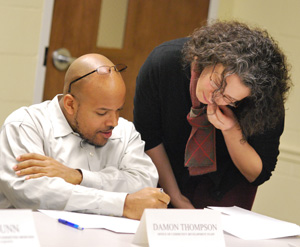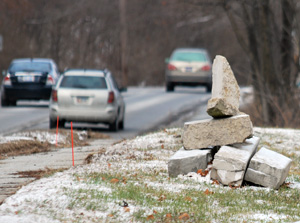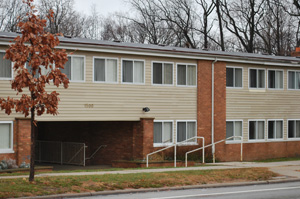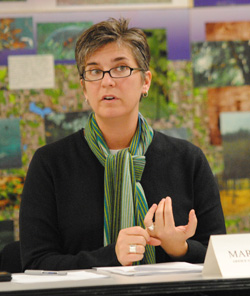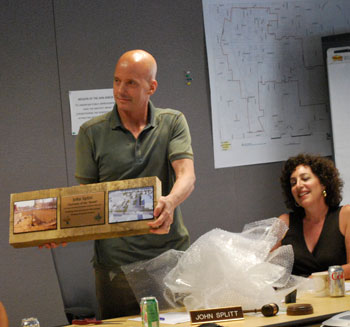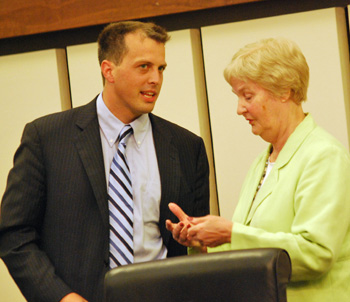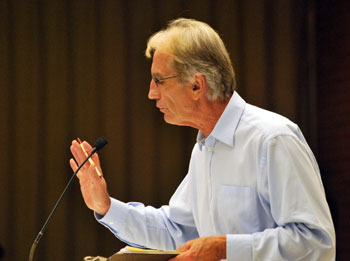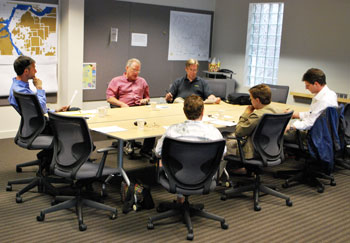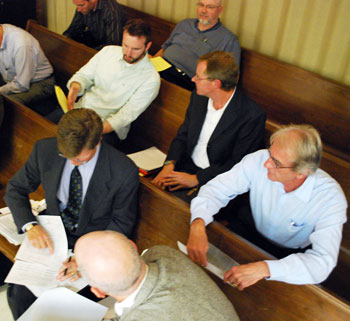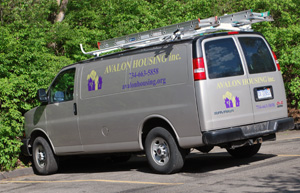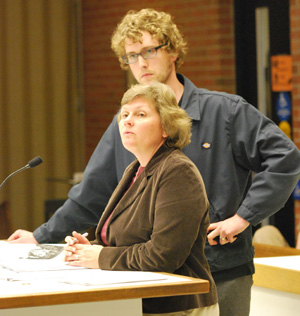Council Expresses Support for Greenway
At its Aug. 4, 2011 meeting, the Ann Arbor city council passed a resolution added late to the agenda, on Tuesday, Aug. 2, that expresses general support for the idea of constructing a greenway along the Allen Creek corridor.
The single “resolved” clause reads: “That the Ann Arbor City Council is fully supportive of the creation of the Allen Creek Greenway, and hereby directs City staff to continue to work with and to assist the Allen Creek Greenway Conservancy during the Greenway’s development and implementation phases.” [.pdf of Aug. 4 Greenway resolution]
The resolution comes as the possibility is becoming more real to construct the first section of the greenway close to the planned Near North housing project. On May 16, 2011, the city council approved neighborhood stabilization funds for the demolition of three houses as site preparation for the Near North project. Adjacent to the Near North site are additional houses that could be demolished and left as open space, which could become part of a greenway. But based on remarks made at the meeting by greenway advocates, it appears that the first segment to be constructed is most likely to be the portion running through 415 W. Washington.
During public commentary, the council heard that various key property owners like the University of Michigan and the Ann Arbor Railroad are interested in hearing a clear statement from the city expressing its commitment.
The 18 “whereas” clauses recite history dating back to 2005 when the city council appointed a task force to study the possibility of a greenway. The history recited by the resolution includes a measure approved by the council on July 6, 2009, which rezoned the First and William parcel as public land and set forth the council’s intention that the property (currently a parking lot) would eventually become part of a greenway. [Additional Chronicle coverage: "First & William to Become Greenway?"]
As a point of history, the July 6, 2009 meeting was the same meeting when the council authorized the start of a request for proposals (RFP) process for development of the city-owned Library Lot, which was eventually terminated on April 4, 2011, without selection of a proposal.
Also included in the Aug. 4 resolution’s recitation of history is a Feb. 1, 2010 measure that started a process for re-developing the city-owned parcel at 415 W. Washington. The city had previously initiated an RFP process for 415 W. Washington. An RFP review committee met seven times from May to December 2008 to review and evaluate the three proposals the city had received. The RFP committee offered praise for all three proposals but did not designate any one of the three as preferred.
The committee punted the issue back to the city council, recommending that the council refine the RFP. The council’s Feb. 1, 2010 action did not follow that recommendation, and instead created a working group of city councilmembers, the Greenway Conservancy and the Arts Alliance to explore the re-use of the property.
Like the Aug. 4, 2011 resolution, the Feb. 1, 2010 measure was sponsored by mayor John Hieftje, Carsten Hohnke (Ward 5) and Margie Teall (Ward 4) and was also added late to the council’s agenda. The July 6, 2009 measure was sponsored by Hieftje and Hohnke.
This brief was filed from the city council’s chambers on the second floor of city hall, located at 301 E. Huron. A more detailed report will follow: [link] [Full Story]





